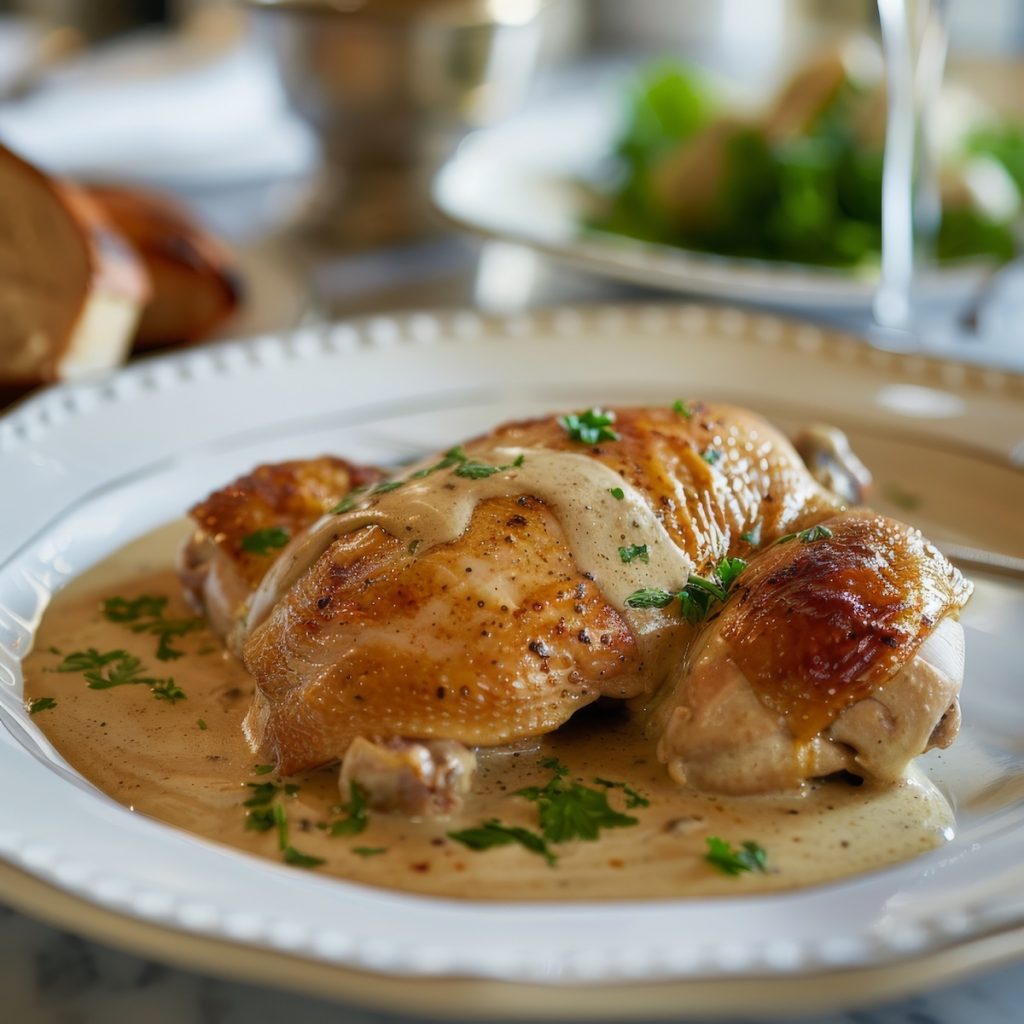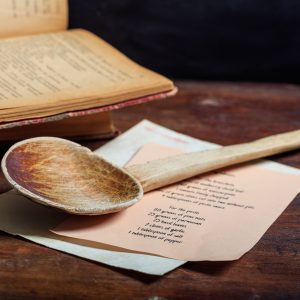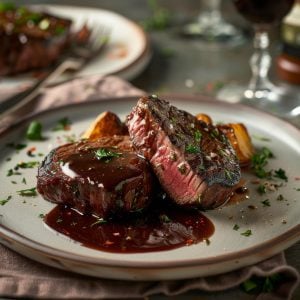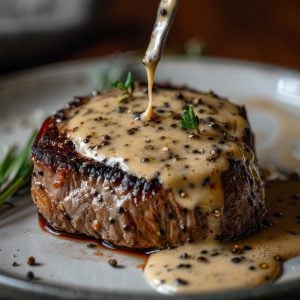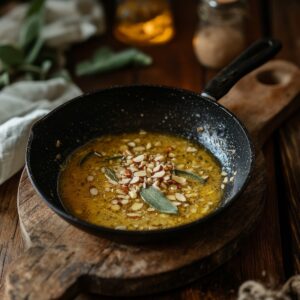Bonnefoy Sauce and History
Bonnefoy sauce, a classic French culinary creation, not only epitomizes the elegance and richness of French cuisine but also carries a rich historical significance. Named after its creator, Chef Pierre Bonnefoy, this velvety sauce is a testament to the artistry and sophistication of French gastronomy, connecting us to the culinary heritage of our ancestors.
At its core, Bonnefoy sauce is a creamy reduction sauce meticulously crafted from a harmonious blend of ingredients to achieve a symphony of flavors. The foundation of this sauce typically includes shallots, white wine, and heavy cream infused with aromatic herbs such as thyme and bay leaves. However, variations may abound as chefs infuse their unique twists to elevate its taste profile.
Preparing Bonnefoy sauce is a labor of love, as meticulous as rewarding. It begins with finely chopped shallots sautéed in butter until translucent, releasing their sweet aroma and building the sauce’s savory base. Next, a generous splash of dry white wine is added, imparting a subtle acidity that balances the richness of the cream.
As the wine reduces, it intensifies in flavor, enhancing the depth of the sauce. This dedication and passion of French chefs makes Bonnefoy sauce truly special.
Heavy cream is introduced once the wine has reduced, transforming the sauce into a luscious, velvety texture. The cream is simmered gently, allowing it to meld with the other ingredients, creating a cohesive symphony of flavors. The sauce is carefully monitored and stirred throughout the cooking process, ensuring it reaches the perfect consistency—neither too thin nor too thick.
More Complexity
To further enhance its complexity, chefs often incorporate additional ingredients such as Dijon mustard, lemon juice, or even a dash of cognac, adding depth and character to the sauce. Finally, the sauce is strained to achieve a smooth, silky finish, ready to adorn myriad dishes with its luxurious flavor.
Bonnefoy sauce is a versatile accompaniment, complementing a wide array of dishes—from delicate seafood to succulent poultry or tender cuts of meat. Its velvety texture and indulgent flavor elevate every bite, transforming a simple meal into a culinary masterpiece. Whether drizzled over poached salmon, spooned atop roasted chicken, or served alongside a juicy steak, Bonnefoy sauce embodies the essence of French culinary finesse, delighting the palate with its exquisite taste and sophistication.
History
The history of Bonnefoy sauce is intertwined with the legacy of its creator, Chef Pierre Bonnefoy, whose culinary prowess and innovation left an indelible mark on French cuisine.
Pierre Bonnefoy, a renowned French chef, rose to prominence during the late 19th century, a period characterized by the flourishing of haute cuisine in France. Trained in the traditional French cooking techniques, Bonnefoy honed his skills in prestigious kitchens across Paris, mastering the art of sauce-making—a cornerstone of French gastronomy.
Bonnefoy’s eponymous sauce is believed to have originated during his tenure as head chef at a distinguished Parisian restaurant. Drawing inspiration from classical French sauces such as béchamel and velouté, Bonnefoy created a sauce that exemplified the refinement and sophistication of French culinary tradition while incorporating his innovative twist.
The result was Bonnefoy sauce—a creamy reduction sauce distinguished by its velvety texture, delicate flavor, and versatility. Bonnefoy meticulously crafted the sauce using a combination of shallots, white wine, and cream, infusing it with aromatic herbs and seasonings to achieve a harmonious balance of flavors.
Bonnefoy sauce quickly garnered acclaim among patrons and fellow chefs, earning its place as a beloved staple of French cuisine. Its popularity spread beyond the confines of Paris, becoming a hallmark of fine dining establishments throughout France and beyond.
Over the years, chefs have refined and reinterpreted Bonnefoy sauce, incorporating new ingredients and techniques to suit evolving tastes and culinary trends. Today, it remains a beloved classic for its timeless elegance and ability to elevate a wide range of dishes—from seafood and poultry to meats and vegetables.
The legacy of Bonnefoy sauce is a testament to Chef Pierre Bonnefoy’s culinary genius and enduring contribution to the rich tapestry of French gastronomy. Its continued popularity is a tribute to the artistry and craftsmanship that define the essence of French cooking.
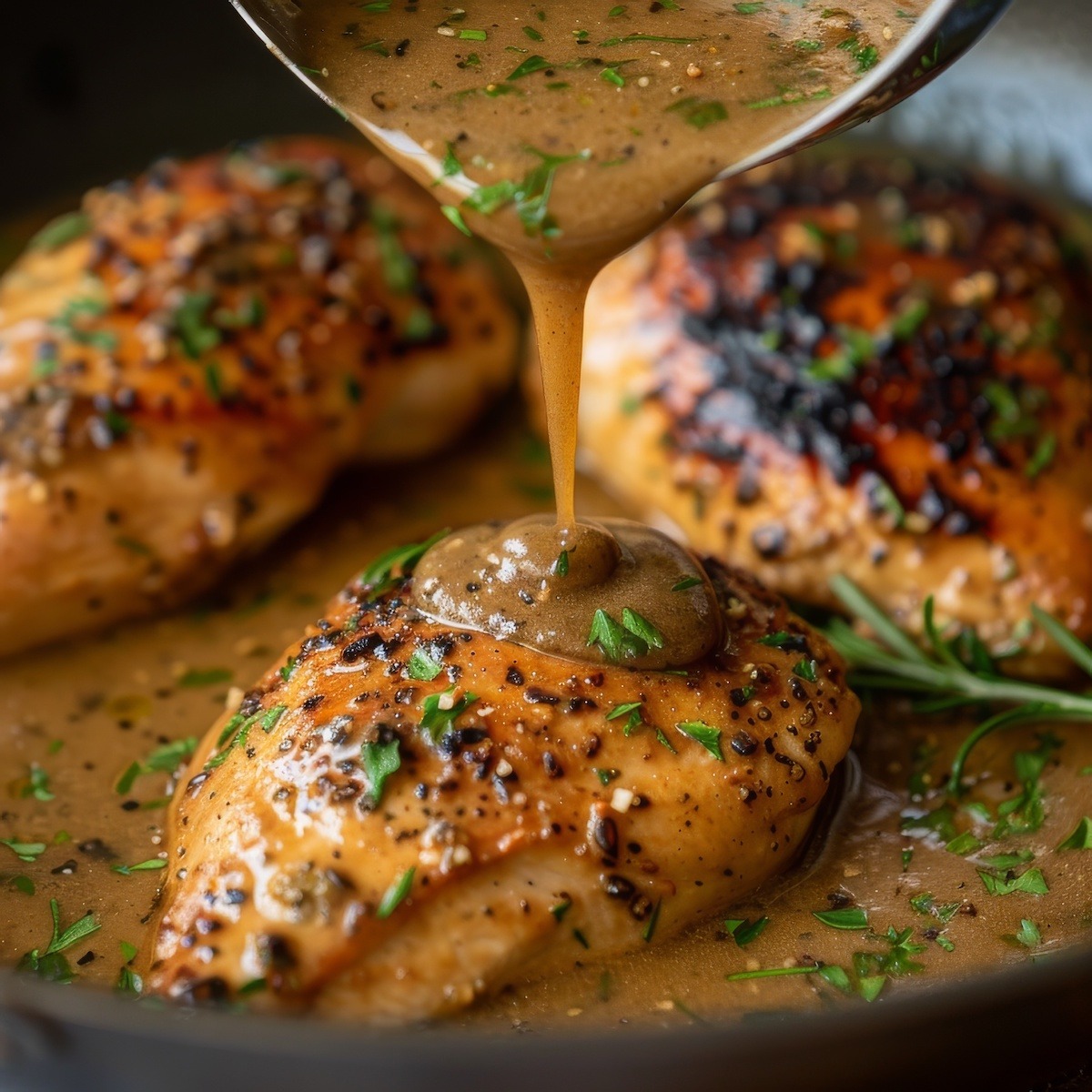
Making Bonnefoy Sauce with Demi Glace
Incorporating demi-glace into Bonnefoy sauce can elevate its flavor profile and add a layer of richness and depth. Demi-glace, a classic French sauce base made from a reduction of brown stock and espagnole sauce, brings a concentrated meaty essence and a velvety texture to the sauce.
To make Bonnefoy sauce with demi-glace, prepare the shallots as usual, then deglaze the pan with white wine. Once the wine has reduced, you would introduce the demi-glace instead of adding heavy cream directly. The demi-glace infuses the sauce with its deep, savory flavor, providing a robust backbone.
After incorporating the demi-glace, you can adjust the consistency of the sauce by adding heavy cream to achieve the desired thickness and creaminess. The sauce’s creaminess balances the intensity of the demi-glace, creating a harmonious blend of flavors.
You can customize the sauce further by incorporating herbs, spices, or other flavorings according to your preference. Whether you enhance it with a hint of Dijon mustard, a squeeze of lemon juice, or a splash of cognac, the addition of demi-glace offers a versatile base for experimentation and creativity.
Ultimately, making Bonnefoy sauce with demi-glace adds a luxurious depth of flavor and complexity to the dish, making it an exquisite accompaniment to various meats, poultry, seafood, and vegetables. Its velvety texture and rich taste elevate any dish to new culinary heights, showcasing the artistry and sophistication of French cuisine.
Bonnefoy Sauce Recipe
Ingredients
- 2 shallots finely chopped
- ½ cup dry white wine
- 1 cup demi glace
- 1 cup heavy cream
- 2 tablespoons unsalted butter
- salt and pepper to taste
- chopped fresh herbs such as thyme or parsley for garnish optional
Instructions
- Melt the butter in a saucepan over medium heat. Add the finely chopped shallots and sauté until softened and translucent, about 2-3 minutes.
- Deglaze the pan with the dry white wine, scraping any browned bits from the bottom. Allow the wine to reduce by half, intensifying its flavor.
- Once the wine has reduced, add the demi-glace to the saucepan. Stir well to combine with the shallots and wine, allowing the flavors to meld together.
- Pour in the heavy cream, stirring continuously to incorporate it into the sauce. Bring the mixture to a gentle simmer, then reduce the heat to low.
- Allow the sauce to simmer gently for about 5-7 minutes or until it has thickened to your desired consistency. Keep an eye on the sauce and stir occasionally to prevent it from sticking to the bottom of the pan.
- Taste the sauce and season with salt and pepper to your liking. Remember that demi-glace can be quite flavorful, so adjust the seasoning accordingly.
- Once the sauce has reached the desired consistency and seasoning, remove it from the heat.
- Optionally, garnish the Bonnefoy sauce with chopped fresh herbs such as thyme or parsley for added flavor and visual appeal.
- Serve the Bonnefoy sauce warm, drizzled over your favorite dish, such as grilled steak, roast chicken, or pasta.

